
Ivan Koleček: Perception of Space - Invitation to the Vernissage at GAB
Source
Gabriel Kurtis, Galerie Architektury Brno
Gabriel Kurtis, Galerie Architektury Brno
Publisher
Tisková zpráva
29.04.2015 00:05
Tisková zpráva
29.04.2015 00:05
Ivan Koleček
We perceive architecture through our human senses – sight, hearing, touch, smell, and taste. Architectural space is an indivisible complex of impressions (which stimulates both the senses and the body's memory), and the experiences of a place can evoke different memories of locations, moods, situations…
The exhibition prepared by architect Ivan Koleček is based on a shared space of the senses, specifically using the example of the Cistercian church founded in the 12th century in Bonmont, which Koleček renovated, states the director of the Architecture Gallery Gabriel Kurtis. Visitors will go through an ideal path of five senses – five cubes – from the sound of an opened door in the dark to the tasting of water and wine. In the dim light of the cubes, each visitor can test whether they can recognize scents characteristic of each season or if they can identify different materials by touch, adds Kurtis.
Ivan Koleček (*1943, Ostrava) studied architecture at the VUT in Brno and has lived in Switzerland since 1969. In 1982, he established his own architectural office in Lausanne, is a member of the Swiss Society of Architects (SIA), and since 1990 also of the Federation of Swiss Architects (FAS). He works at the Faculty of Architecture at VUT in Brno, where he was appointed professor in 2005. He is the author of numerous public buildings and renovations, mainly in Lausanne and its surroundings: including the Rumine and Montbenon palaces or the High School of Education in Lausanne, the prison in Lonay, or the monastery churches in Bonmont and Payerne. In 1966, he received an award from the Association of Architects as part of the Grand Prix exhibition for Czech architects working abroad. The exhibition on the theme of the five senses follows the chapters of the publication Layers – Stratigraphie, published by Arbor Vitae in 2010.
Koleček's works from 1990 to the present (renovations of historical architecture or complexes in Moudon, Nyon, Vevey, Daillens; revitalization of buildings and interiors in Lausanne; both private and public new constructions in Sainte Croix, Villars) are also presented at the exhibition.
“Architecture must find a response to the balanced satisfaction of all five human senses. It cannot only address the theoretical and functional role of architecture. It must respond to the five senses that define our existence. This role remains its main task in today’s development of the world.”
“Modern architecture had encoded in itself since its inception a belief in the rational essence of a new era, in scientific and technical progress, which enables not only the development of completely new architectural forms but also addressing fundamental problems of human society. Sometimes it ended in dry factuality or cold geometry of forms. And while the emphasis on the emotional impact of an architectural work sought to assert itself with the same urgency as the rational approach, numerous tendencies and pressures even outside the realm of architecture itself led and continue to lead to a significant impoverishment of the built environment – an impoverishment that deprives it of precisely those qualities resonating with deeper layers of human perception of the world. Rational calculation in architecture – whether motivated by a technical approach or pragmatic commercial interest – can hardly capture what is unmeasurable, yet fundamentally conditions the overall comfort of the built environment: modulation of light reflecting differently from various surfaces, echoes of footsteps on the floor, the scent of wood, the smoothness and chill of a brass doorknob, all of these are qualities that create a strong and engaging atmosphere of a building… Through construction, we also realize the miraculous nature of the world with its colors, lights and shadows, sounds, and scents. But architecture must provide us with the opportunity to do so by consciously working with these qualities, using elements that awaken our senses as its starting material alongside reasonable mastery of construction, layouts, etc. Great architects of modernity like Wright or Aalto worked this way – whether programmatically or intuitively. And contemporary architects such as Peter Zumthor, Juhani Pallasmaa, Steven Holl, and many others pursue similar goals in their creations and theoretical reflections. This exhibition's theme, conceived by architect Ivan Koleček, is also embedded as a programmatic credo in his own work and pedagogical activity.”
The exhibition will be inaugurated with the personal participation of architect Ivan Koleček and theorist Petr Kratochvíl on Wednesday, April 29, 2015, at 6:00 PM in the spaces of the Architecture Gallery Brno.
Part of the exhibition program is a lecture by Ivan Koleček, which will take place before the opening on April 29, 2015, in the auditorium A310 of the Faculty of Architecture VUT in Brno at 3:00 PM.
The exhibition will be open daily from 10:00 AM to 6:00 PM until May 29, 2015.
Organizer/ Architecture Gallery Brno
Co-organizer/ Jaroslav Frágner Gallery, Ivan Koleček
Concept/ Ivan Koleček
Collaboration/ Lucie Datinská, Jiří Kolomazník, Jana Závodná
Introductory essay/ Petr Kratochvíl
Image materials/ Jean–Philippe Daulte, Ivan Koleček, Filip Šlapal
Video/ Julie Sando
Graphic design/ František Dlabáč
More information >
The exhibition prepared by architect Ivan Koleček is based on a shared space of the senses, specifically using the example of the Cistercian church founded in the 12th century in Bonmont, which Koleček renovated, states the director of the Architecture Gallery Gabriel Kurtis. Visitors will go through an ideal path of five senses – five cubes – from the sound of an opened door in the dark to the tasting of water and wine. In the dim light of the cubes, each visitor can test whether they can recognize scents characteristic of each season or if they can identify different materials by touch, adds Kurtis.
Ivan Koleček (*1943, Ostrava) studied architecture at the VUT in Brno and has lived in Switzerland since 1969. In 1982, he established his own architectural office in Lausanne, is a member of the Swiss Society of Architects (SIA), and since 1990 also of the Federation of Swiss Architects (FAS). He works at the Faculty of Architecture at VUT in Brno, where he was appointed professor in 2005. He is the author of numerous public buildings and renovations, mainly in Lausanne and its surroundings: including the Rumine and Montbenon palaces or the High School of Education in Lausanne, the prison in Lonay, or the monastery churches in Bonmont and Payerne. In 1966, he received an award from the Association of Architects as part of the Grand Prix exhibition for Czech architects working abroad. The exhibition on the theme of the five senses follows the chapters of the publication Layers – Stratigraphie, published by Arbor Vitae in 2010.
Koleček's works from 1990 to the present (renovations of historical architecture or complexes in Moudon, Nyon, Vevey, Daillens; revitalization of buildings and interiors in Lausanne; both private and public new constructions in Sainte Croix, Villars) are also presented at the exhibition.
“Architecture must find a response to the balanced satisfaction of all five human senses. It cannot only address the theoretical and functional role of architecture. It must respond to the five senses that define our existence. This role remains its main task in today’s development of the world.”
Ivan Koleček
“Modern architecture had encoded in itself since its inception a belief in the rational essence of a new era, in scientific and technical progress, which enables not only the development of completely new architectural forms but also addressing fundamental problems of human society. Sometimes it ended in dry factuality or cold geometry of forms. And while the emphasis on the emotional impact of an architectural work sought to assert itself with the same urgency as the rational approach, numerous tendencies and pressures even outside the realm of architecture itself led and continue to lead to a significant impoverishment of the built environment – an impoverishment that deprives it of precisely those qualities resonating with deeper layers of human perception of the world. Rational calculation in architecture – whether motivated by a technical approach or pragmatic commercial interest – can hardly capture what is unmeasurable, yet fundamentally conditions the overall comfort of the built environment: modulation of light reflecting differently from various surfaces, echoes of footsteps on the floor, the scent of wood, the smoothness and chill of a brass doorknob, all of these are qualities that create a strong and engaging atmosphere of a building… Through construction, we also realize the miraculous nature of the world with its colors, lights and shadows, sounds, and scents. But architecture must provide us with the opportunity to do so by consciously working with these qualities, using elements that awaken our senses as its starting material alongside reasonable mastery of construction, layouts, etc. Great architects of modernity like Wright or Aalto worked this way – whether programmatically or intuitively. And contemporary architects such as Peter Zumthor, Juhani Pallasmaa, Steven Holl, and many others pursue similar goals in their creations and theoretical reflections. This exhibition's theme, conceived by architect Ivan Koleček, is also embedded as a programmatic credo in his own work and pedagogical activity.”
Petr Kratochvíl
The exhibition will be inaugurated with the personal participation of architect Ivan Koleček and theorist Petr Kratochvíl on Wednesday, April 29, 2015, at 6:00 PM in the spaces of the Architecture Gallery Brno.
Part of the exhibition program is a lecture by Ivan Koleček, which will take place before the opening on April 29, 2015, in the auditorium A310 of the Faculty of Architecture VUT in Brno at 3:00 PM.
The exhibition will be open daily from 10:00 AM to 6:00 PM until May 29, 2015.
Organizer/ Architecture Gallery Brno
Co-organizer/ Jaroslav Frágner Gallery, Ivan Koleček
Concept/ Ivan Koleček
Collaboration/ Lucie Datinská, Jiří Kolomazník, Jana Závodná
Introductory essay/ Petr Kratochvíl
Image materials/ Jean–Philippe Daulte, Ivan Koleček, Filip Šlapal
Video/ Julie Sando
Graphic design/ František Dlabáč
More information >
The English translation is powered by AI tool. Switch to Czech to view the original text source.
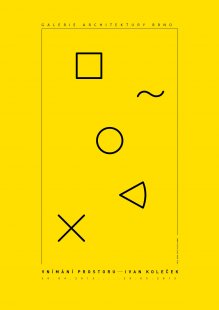
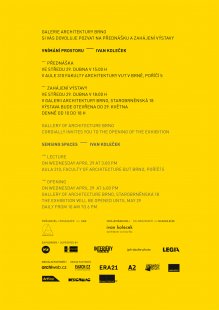
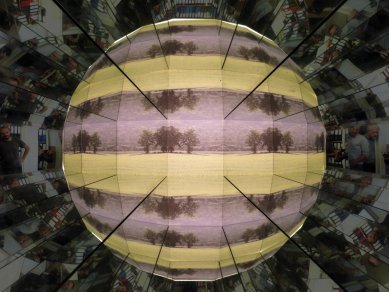
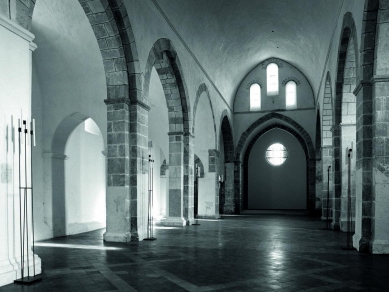
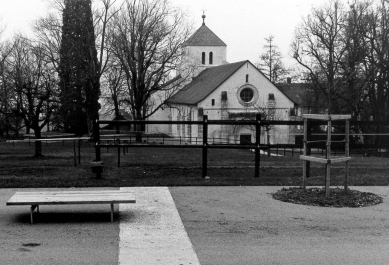
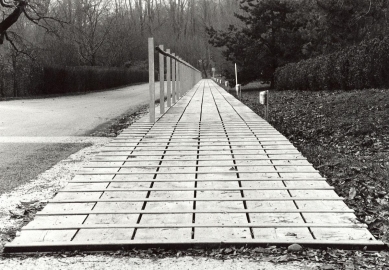

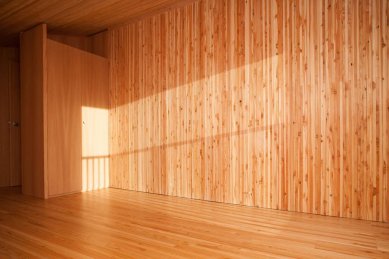
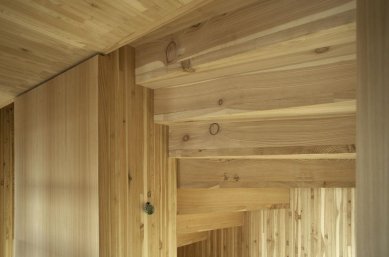
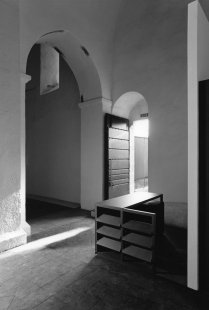
0 comments
add comment












